Insiders
Starwood Connects SPG and Foursquare

 Maldives Promotion House – Starwood Hotels & Resorts Worldwide, Inc, an on-going innovator and leader in the digital space, today launched a new digital extension to their award winning Starwood Preferred Guest (SPG) loyalty program by tapping into location-based social networking.
Maldives Promotion House – Starwood Hotels & Resorts Worldwide, Inc, an on-going innovator and leader in the digital space, today launched a new digital extension to their award winning Starwood Preferred Guest (SPG) loyalty program by tapping into location-based social networking.
Guests can now earn valuable Starpoints and Free Resort Night Awards for foursquare activity at Starwood hotels and resorts in nearly 100 countries. This further allows for hotels to engage with guests and reward SPG members for their geo-social behavior, leveraging Starpoints as a form of “social currency.” To get started, members can visit spg.com/socialcheckins to link their SPG and foursquare accounts.
SPG members can also earn bonus Starpoints by checking in via foursquare with a confirmed reservation at one of more than 1000 Starwood hotels and resorts around the world. Plus, every day throughout the month of May, a Free Resort Night Award will be hidden across one of Starwood hotels and resorts, to be unlocked daily by one lucky check in.
Foursquare check-ins will also serve as an entry into SPG’s grand prize giveaway to win a five-night resort getaway plus airfare. In August, new bonus opportunities will be introduced on an ongoing basis, allowing Starwood to optimize foursquare specials by brand or region of the world.
Every month, the SPG member with the greatest number of foursquare check-ins across all Starwood hotels will be declared the SPG Mayor. In addition to status and special SPG perks, the Mayor will be interviewed and featured within the specials landing page and will also be asked to contribute travel tips to the SPG foursquare tips page, foursquare.com/spginsider.
 “This new partnership between innovators redefines the ‘check-in’ for SPG members, enabling rewarding experiences beyond their hotel stays,” Senior Vice President of Starwood Preferred Guest Chris Holdren said. “This is yet another example of Starwood’s ongoing commitment to build deeper relationships with our members worldwide in ways that are relevant to their lives.”
“This new partnership between innovators redefines the ‘check-in’ for SPG members, enabling rewarding experiences beyond their hotel stays,” Senior Vice President of Starwood Preferred Guest Chris Holdren said. “This is yet another example of Starwood’s ongoing commitment to build deeper relationships with our members worldwide in ways that are relevant to their lives.”
With the launch of the social currency program and the recent expansion of a company-wide social media infrastructure, encompassing more than 1,000 properties, nine brands, 125,000 employees in 100 countries, all operating under one consistent strategy, Starwood continues to be an innovator and first in capitalizing on the digital space to transform the guest experience.
“We’re thrilled to have the opportunity to work with Starwood on what will be one of the widest reaching loyalty integrations on any location-based service,” Director of Business Development for foursquare, Tristan Walker said. “Foursquare is focused on helping businesses reward loyal customers, and few companies truly understand customer loyalty like Starwood, so the partnership is a natural fit.”
SPG membership is free and guests can begin earning Starpoints starting with their first stay. Travelers who are not yet SPG members can join the award-winning loyalty program during any stay at a Starwood hotel or resort. For more details on the program visit spg.com/socialcheckins or spg.com/foursquare to learn about the launch offer and new monthly SPG Mayor program.
By creating a program centered on its members, SPG has developed the most passionate and knowledgeable membership base in the hotel loyalty space. Through its use of new technologies and innovative channels such as SPG.com, SPG.com/stayconnected, SPG.com/flights and others, SPG continues to innovate and lead the industry.
Action
Freediving with tiger sharks: Shark Expedition Fuvahmulah collaborates with marine biologist Andriana Fragola
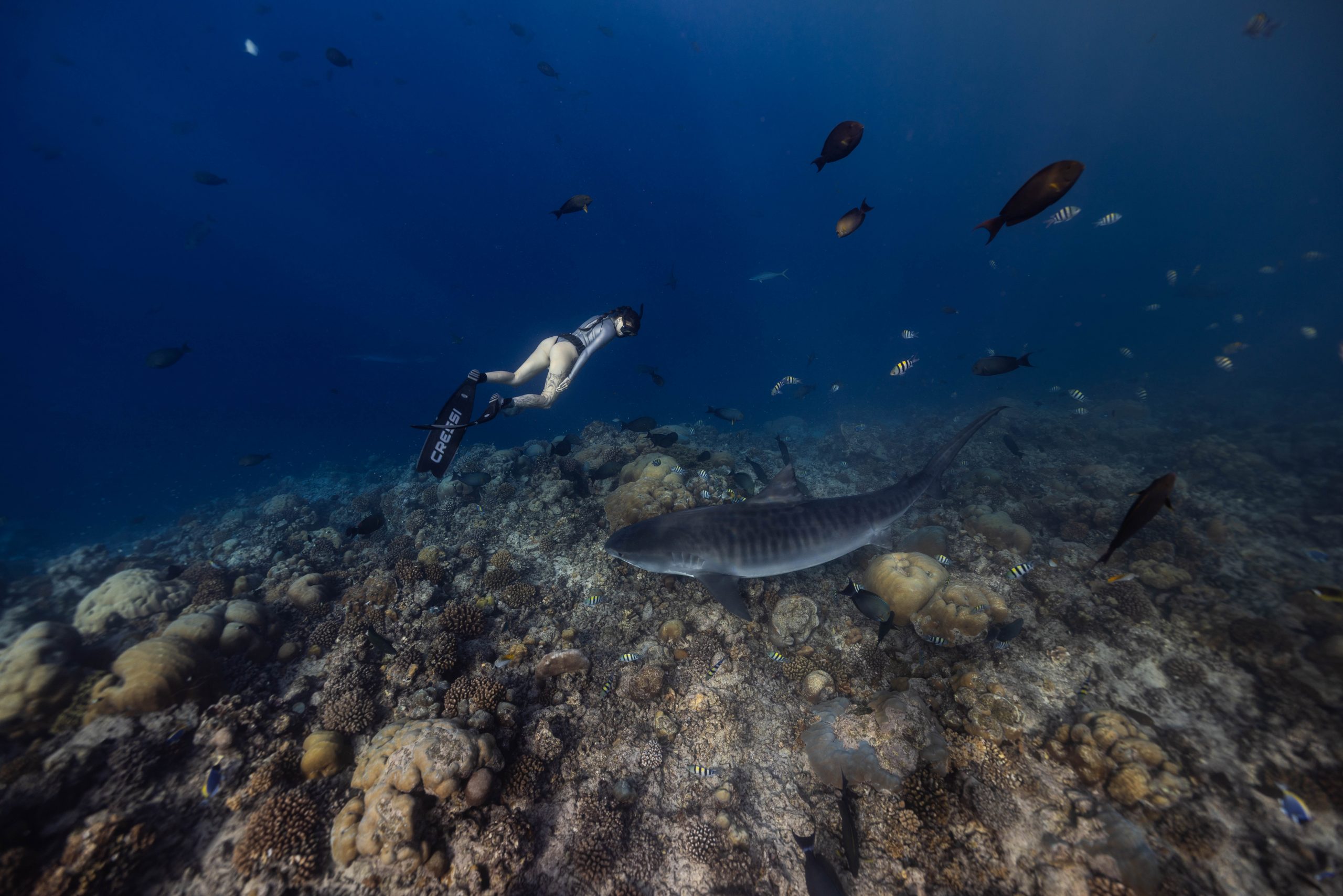
Shark Expedition Fuvahmulah, renowned for its world-class scuba diving encounters, has announced an exciting expansion: the chance to freedive with tiger sharks in the Maldives’ southernmost atoll.
Fuvahmulah, often hailed as the “Tiger Shark Capital of the World,” is the only place on the planet where year-round encounters with tiger sharks are virtually guaranteed. With more than 280 identified resident tiger sharks, the island has become a bucket-list destination for divers and marine enthusiasts alike.
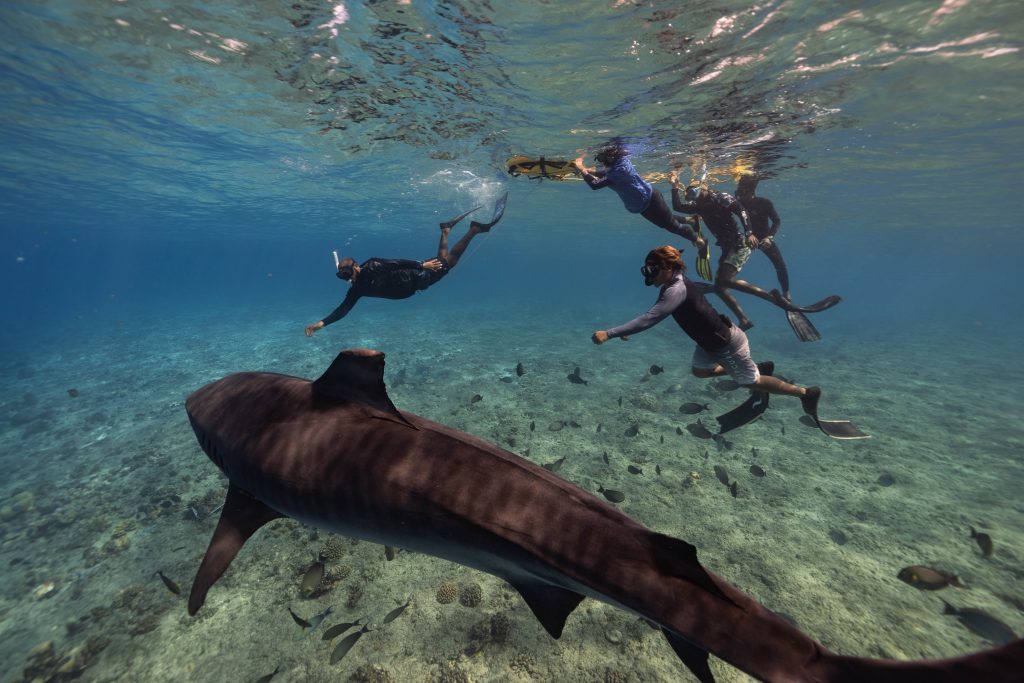
The newly introduced freediving experience offers a unique way to interact with these apex predators. Unlike scuba diving, freediving takes place without bubbles or heavy gear, allowing participants to connect with tiger sharks in a quieter, more natural way. This approach often makes the encounter more comfortable for the sharks and more intimate for the diver.
Guiding these expeditions is Andriana “Andy” Fragola, a marine biologist, shark diver, and conservationist currently based in Hawaii. Andy holds a Master’s Degree in Marine Conservation Biology with a focus on shark microbiology and has dedicated her career to shark research, conservation, and public education. Through her work in media and content creation, she strives to raise awareness about the importance of shark conservation and inspire people to take action to protect marine ecosystems.
“Freediving with tiger sharks is a raw and transformative experience,” says Andy. “Being eye-to-eye with these incredible animals without the barrier of scuba gear allows you to see them for what they truly are—powerful, intelligent, and essential to the health of our oceans.”
Shark Expedition Fuvahmulah ensures that all freediving activities are conducted under strict safety protocols. With experienced professionals like Andy leading the dives, participants can expect both an exhilarating and responsible adventure.
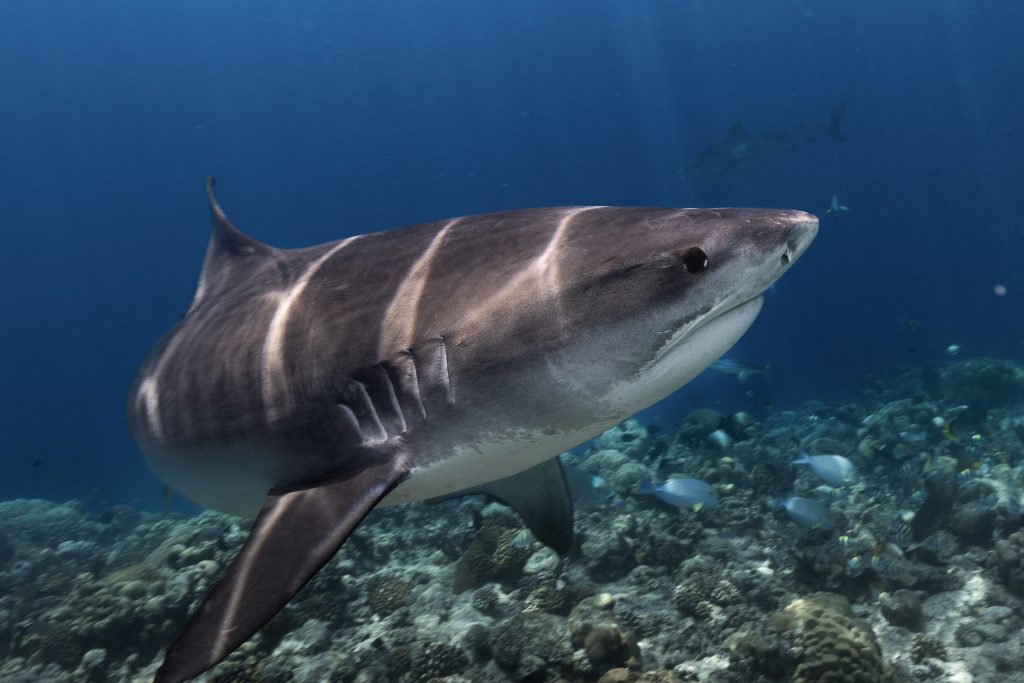
Why this experience stands out:
- Eye-to-eye encounters with tiger sharks in their natural habitat.
- A deeper, more personal connection with marine life.
- Expert-led guidance ensuring safety and conservation awareness.
In addition to freediving, Shark Expedition Fuvahmulah offers a range of packages, including accommodation options, making it easier for adventurers to fully immerse themselves in the island’s extraordinary marine environment.
For bookings and more information:
📧 Email: sales@scuba-expeditions.com
📱 WhatsApp: +960 9894653
🌐 www.scuba-expeditions.com
News
MIC appoints Ali Shakir as Group General Manager

Maldives Inflight Catering Pvt Ltd (MIC) has announced the appointment of Ali Shakir as the Group General Manager. With over 27 years of experience in the hospitality industry, Ali Shakir will now oversee operations for the Maldives Inflight Kitchen, Hulhule Island Hotel, and Madifushi Private Island Maldives.
Ali Shakir, who most recently served as General Manager at OBLU NATURE Helengeli by SENTIDO, played a pivotal role in the resort’s redevelopment and reopening. Prior to that, he joined Atmosphere Core in 2019 as Resort Manager at VARU By Atmosphere, where he was instrumental in the pre-opening of several properties, including OBLU XPERIENCE Ailafushi, OBLU SELECT Lobigili, OZEN RESERVE BOLIFUSHI, and VARU By Atmosphere. His wealth of experience also includes key positions at prestigious resorts such as Angsana Velavaru, Hulhule Island Hotel, and Paradise Island Resort and Spa.
Ali is no stranger to MIC, having spent more than 15 years at Hulhule Island Hotel, where he rose through the ranks to become Executive Assistant Manager before departing in 2019.
Commenting on his new role, Ali Shakir expressed his enthusiasm:
“I am honored to rejoin MIC and lead the operations of these iconic properties. This company has always held a special place in my career, and I am excited to work with the talented team to drive further success and innovation.”
Ibrahim Shareef Mohamed, Managing Director of MIC, welcomed Ali to the leadership team, praising his extensive experience and strategic vision:
“We are delighted to have Ali back at MIC. His proven track record in the hospitality sector, combined with his in-depth knowledge of Hulhule Island Hotel and his previous achievements, makes him the ideal leader to take us forward. I have no doubt that under his leadership, MIC will continue to set benchmarks for excellence.”
Ali Shakir holds a General Managers Program certificate from Cornell University, USA, and a General Hotel Service certification from the Institute of Hotel and Catering Service, Maldives.
MIC is a joint venture between Maldives Airports Company Limited and SATS Ltd, renowned for its inflight catering services to airlines and private jets. Beyond the Maldives Inflight Kitchen, MIC also manages Hulhule Island Hotel, the only airport hotel at Velana International Airport, and the luxurious Madifushi Private Island Maldives in Meemu Atoll.
Tips & Advice
Flying after scuba diving: Essential guidelines for safe travel

Scuba diving in the Maldives offers an unparalleled experience, with its vibrant coral reefs, diverse marine life, and crystal-clear waters. However, one crucial aspect that divers must consider is the timing of their flights after diving. Understanding the recommended waiting periods before flying is essential to ensure safety and prevent decompression sickness. Here’s what you need to know.
Understanding Decompression Sickness
Decompression sickness, also known as “the bends,” occurs when nitrogen bubbles form in the bloodstream and tissues due to rapid changes in pressure. This can happen if a diver ascends too quickly or flies too soon after diving. The reduced cabin pressure in an airplane can exacerbate the formation of these bubbles, leading to serious health risks.

Recommended Waiting Times
The waiting time before flying after scuba diving depends on the type and number of dives completed. Here are the general guidelines:
- Single Dive: If you have completed a single, no-decompression dive, it is recommended to wait at least 12 hours before flying. This allows sufficient time for the body to eliminate excess nitrogen.
- Multiple Dives or Multiple Days of Diving: For divers who have completed multiple dives or have been diving over several days, the recommended waiting period extends to 18 to 24 hours. This longer duration helps ensure that nitrogen levels in the body have decreased to safe levels.
- Dives Requiring Decompression Stops: If your dive profile included decompression stops, it is crucial to wait at least 24 to 48 hours before boarding a flight. Decompression dives involve higher nitrogen absorption, necessitating a longer off-gassing period.
Seaplane and Domestic Flights
Many tourists visiting resorts and other islands in the Maldives travel by seaplane or domestic flights. While these flights generally operate at lower altitudes compared to international flights, the same waiting time guidelines apply. The reason is that even at lower altitudes, the risk of decompression sickness remains significant due to the changes in pressure.
Practical Tips for Divers
- Plan Your Dives and Flights: When planning your diving trip, consider your flight schedule. Ensure that you have ample time between your last dive and your flight to adhere to the recommended waiting periods.
- Stay Hydrated: Proper hydration can aid in the elimination of nitrogen from the body. Drink plenty of water before and after your dives.
- Monitor Your Health: Pay attention to any symptoms of decompression sickness, such as joint pain, dizziness, or difficulty breathing. If you experience any of these symptoms, seek medical attention immediately.
- Use Dive Computers: Modern dive computers can help track your nitrogen levels and provide personalized recommendations for safe flying times based on your dive profile.
Flying after scuba diving requires careful consideration and adherence to safety guidelines to prevent decompression sickness. By following the recommended waiting times and taking necessary precautions, divers can enjoy their underwater adventures in the Maldives and travel safely. Always consult with dive professionals or medical experts if you have any concerns about your health and safety.
-

 Featured1 week ago
Featured1 week agoLily Beach Maldives unveils ‘Black & White Vintage’ festive season
-
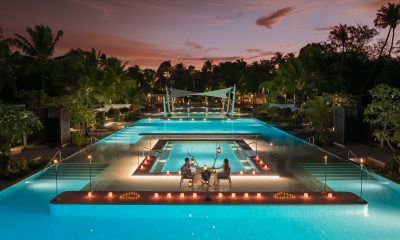
 Featured1 week ago
Featured1 week agoKuda Villingili Maldives crafts poetic Valentine’s escape ‘Through the Sands of Time’
-
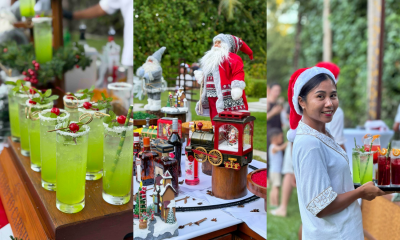
 Featured1 week ago
Featured1 week agoFestive spirit arrives early at Ayada Maldives with cake mixing tradition
-
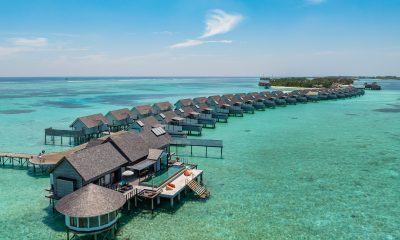
 Featured1 week ago
Featured1 week agoLuxury that whispers: THE OZEN COLLECTION celebrates five years of refined hospitality
-
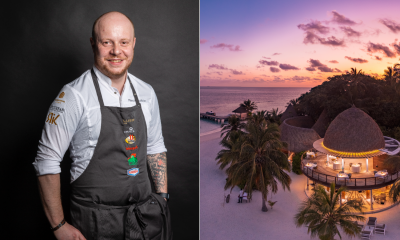
 Cooking1 week ago
Cooking1 week agoFine dining meets island serenity: Chef Pascal Oudotte at Kandolhu Maldives
-

 Awards6 days ago
Awards6 days agoMaldives again named World’s Leading Destination
-
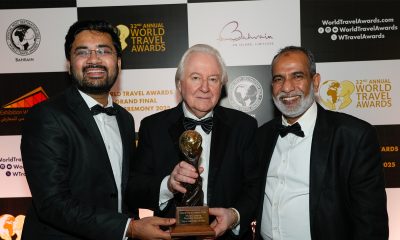
 Awards6 days ago
Awards6 days agoTrans Maldivian Airways named World’s Leading Seaplane Operator 2025
-

 Action7 days ago
Action7 days agoSiyam World achieves snorkelling world record with 307 participants















